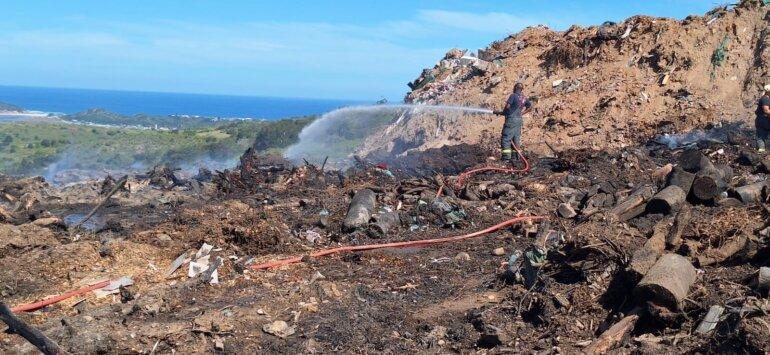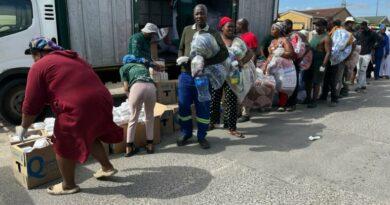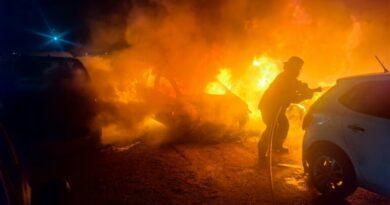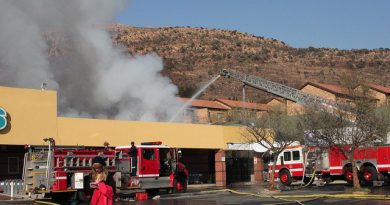Why is there a major fire risk at landfill sites?
Fires are landfill sites, are not uncommon. A fire started at the landfill site (transfer station) in Great Brak River on Saturday, 30 November. Fire fighting operations have been ongoing since and the situation is monitored carefully.
Fires at landfill sites can occur due to a variety of factors, both natural and human-induced. Here are some of the key causes:
1. Landfill gas accumulation:
As waste decomposes in landfills, it generates gases like methane, which are highly flammable. If these gases accumulate and are not properly vented, they can ignite, causing fires. This can be especially hazardous if the gas is trapped beneath the surface of the landfill.
2. Spontaneous combustion:
Certain types of waste, such as compost, paper, or chemicals, can generate heat as they decompose. If the heat builds up and isn’t dissipated, it may cause the material to spontaneously combust, leading to a fire.
3. Inappropriate disposal of hazardous materials:
If flammable or combustible materials (e.g., batteries, paints, solvents, or chemicals) are improperly discarded in landfills, they can pose a significant fire risk. These materials can react with other substances or generate enough heat to ignite.
4. Arson:
In some cases, landfill fires may be deliberately set by individuals. Arson is a known risk at poorly managed or under-secured landfills, where the risk of detection is lower.
5. Electrical malfunctions:
Landfills may have equipment like compactors, conveyor belts, or leachate collection systems that rely on electrical components. Malfunctions or short circuits in these systems can spark fires.
6. Heat from heavy machinery:
The use of heavy equipment, such as bulldozers and excavators, can sometimes generate enough heat (from engines or friction) to ignite flammable materials in the landfill. This is particularly true if the machinery works in areas where methane or other flammable substances are present.
7. Poor waste management practices:
Landfills that are poorly managed, with inadequate separation of waste, insufficient covering of waste, or improper monitoring of gas levels, are at higher risk for fires. A lack of proper infrastructure to manage waste efficiently can lead to hazardous conditions that foster fire outbreaks.
8. Weather conditions:
Extreme heat, dry conditions, or lightning strikes can also trigger fires in landfills. During heatwaves, the risk of fires increases due to dry conditions that can make certain materials more likely to catch fire.
9. Landfill settling or instability:
Over time, landfills can settle or collapse, creating areas where heat may concentrate or gas may escape and ignite. This instability can also affect gas vents and drainage systems, exacerbating the risk of fires.
Fires at landfill sites are a serious environmental concern, as they can release harmful pollutants into the air, damage nearby ecosystems, and pose health risks to nearby communities. Proper management, including monitoring landfill gas, safe disposal practices, and regular inspections, is essential to mitigate the risk of fires.
Mossel Bay Municipality
Burns and the Treatment of Burns




